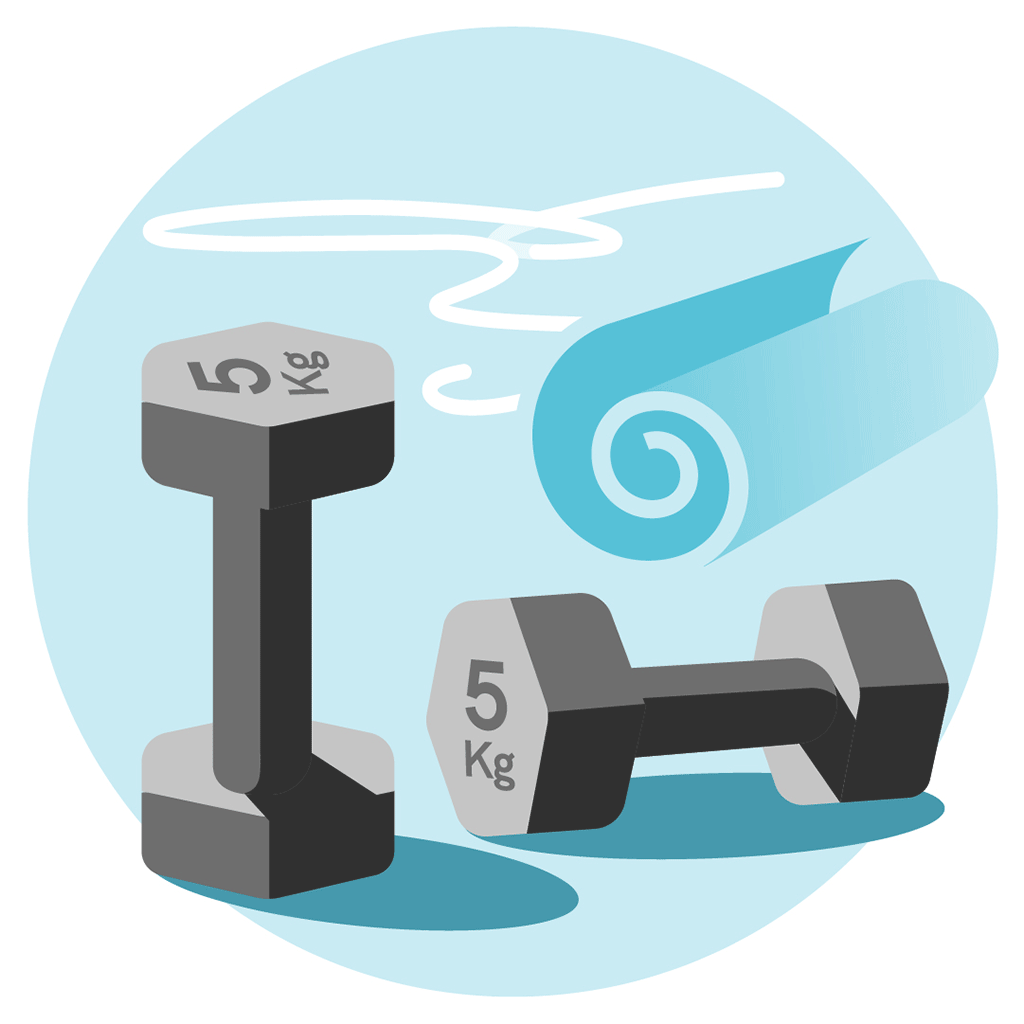Strength Training
Strength training is known by many names, including resistance exercises or weight training. All of these terms refer to exercises where you lift or pull against resistance, usually added by weights.

The resistance can be dumbbells, rubber exercise tubing, your own body weight, bricks, bottles of water, or any other object that causes the muscles to contract.
Benefits of Strength Training
Regular strength training can improve your blood glucose by increasing insulin sensitivity, as well as increasing glucose transport.

These benefits improve diabetes risk, and lower the risk of developing heart disease, high blood pressure, and obesity.
It is recommended to have 2−3 sessions a week of resistance exercise, on non-consecutive days.
Principles of Strength Training
Resistance training is based on the principle that the muscles of your body will work to overcome a resisting force, like lifting something that is being weighed down because it is heavy.
Examples of resistance training are:
- Lifting free weights
- Using resistance machines at the gym
- Using resistance bands to leverage body weight in building strength.

Strength Training and Diabetes
Diabetes has been associated with lower muscle strength and decline in functional status. The good news is that regular strength training can help prevent this.

Research has actually shown that a combination of strength training, aerobic exercise, and healthy diets, enhancing the body’s metabolic mechanisms more than either exercise alone can.
Tip: Avoiding Hypoglycemia
If you plan to participate in resistance and aerobic exercises in the same session, it is safer to start with resistance training to avoid hypoglycemic events.
Leave a Reply